Bangladesh is said to be the most densely populated place on the planet and is home to a rich cultural and literary heritage. It was here, from 21 to 23 September, that over 500 young people gathered from across the country, in the capital Dhaka—one of the fastest growing cities in the world. There, on the grounds of the Gonoshasthaya Kendra Centre, the participants spent three days consulting on the contributions youth can make to the community-building process in their neighbourhoods and villages.
The first busload of participants arrived at 3 p.m. on the day before the conference began, after 18 hours of travel, and they continued to arrive in waves until the early morning hours. The joy and excitement of the youth diminished any sense of difficulty in their journey, and the spirit of the opening day was marked with a profound sense of gratitude for having been given the opportunity to participate in such a historic gathering.
“Deep and meaningful relationships are necessary between individuals to help each other build a community.”
A participant at the conference
The young people had, in many cases, made great efforts to attend the conference. One girl who had never travelled outside of her village, convinced her father to take time off work and escort her to the conference—the only way it would be possible for her to attend. So inspired by the transformation he saw in his daughter and the conference participants, her father was happy he had agreed to accompany her.
In both large and small workshop groups, participants explored themes related to youth and community building, and the various ways each generation can contribute to the advancement of society. They also discussed true friendship and the necessity of fostering an environment of mutual support in which every member of the community feels empowered to contribute their share to the society-building process. In this connection, one young person said, “Deep and meaningful relationships are necessary between individuals to help each other build a community.” “Youth can help each other overcome the negative forces of society,” said another, “when they work together in a spirit of cooperation and support.”
Participants recognized the role of consultation in finding solutions to the challenges they face and encouraged one another to find ways to strengthen that process in their communities. “All obstacles can be overcome through consultation,” said one youth. “Through it, and with patient work, we can achieve success in our efforts to contribute to the betterment of our communities.”
The evening plenaries featured artistic presentations that the youth had prepared earlier in the day, based on insights gleaned from the study of the conference materials. Others had been practicing for some time to share with their fellow participants traditional songs and dances, reflective of the vibrant tapestry of the cultural heritage of the region. In all cases, the presentations reflected the joy of learning and the spirit of love that permeated the three days of the conference. The sounds of the dhol, harmonium, guitar, and tabla filled the air as the youth shared songs. One of the presentations was a mime—the first time many had seen this art form—depicting a young man who struggled against the negative forces represented as a wall, in order to join his friends working for constructive change on the other side. Inspired by their hope, he managed to break down the wall and participate in the community-building process with his peers.
Through their study of the conference materials and discussions on its themes, the 530 young people gathered in Dhaka caught a glimpse of the inherent power of the society-building process under way in neighbourhoods and villages across Bangladesh. Beyond that, the spirit of unity and cooperation that characterized the conference, as everyone worked together in harmony throughout the three days, left a lasting impression on those present. Bolstered by their experiences, the youth returned to their homes, committed to continue to lend their energies to the betterment of the world.
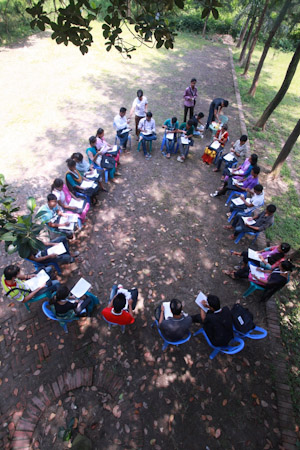
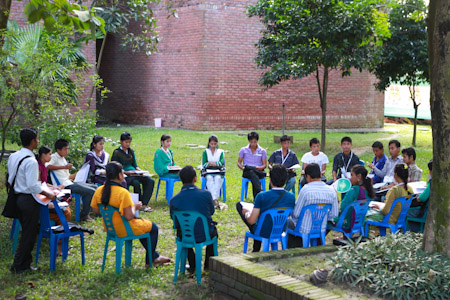
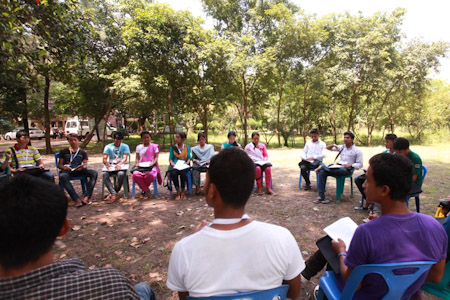
Youth consult together in small workshop groups
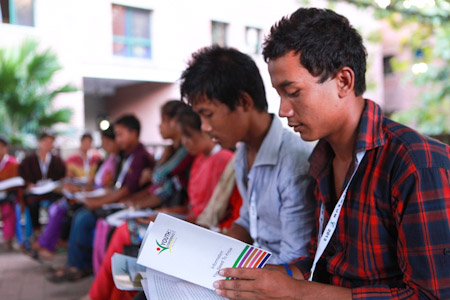
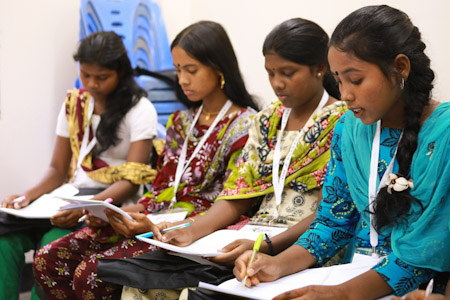
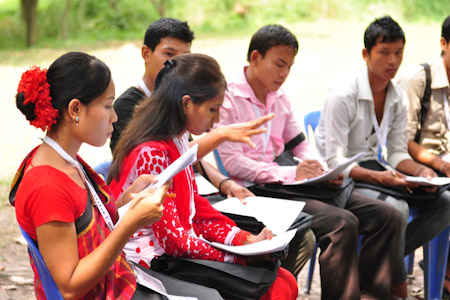
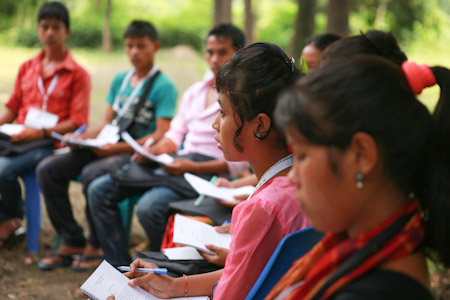
The conference was an opportunity for the participants to reflect together about the contribution they can make to the spiritual and social development of their communities.
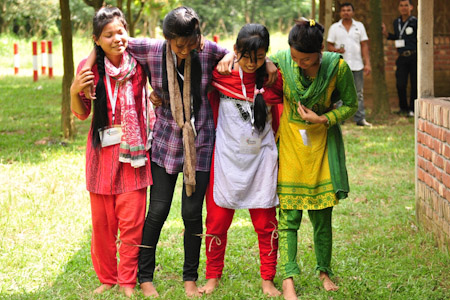
Youth devised activities to articulate the concepts explored in the material that was studied
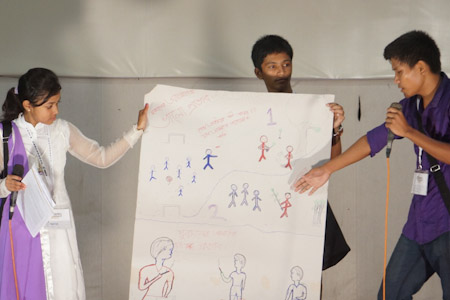
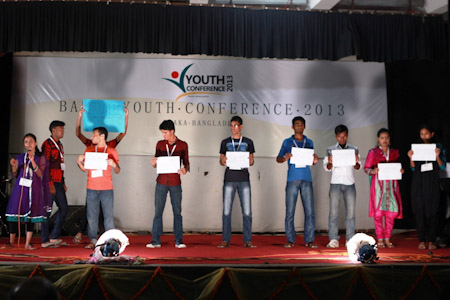
Participants used a variety of creative methods to share what they had learned during the workshop sessions


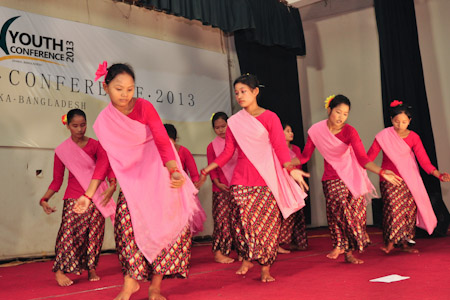
Music and the arts were a large component of the conference